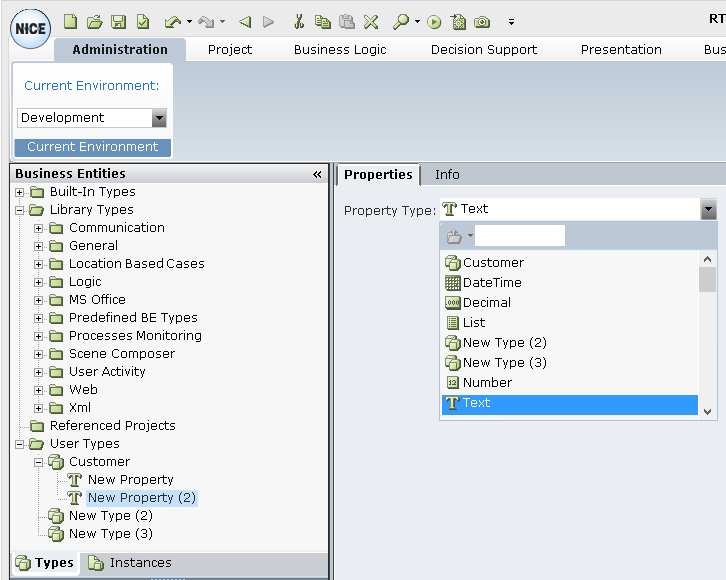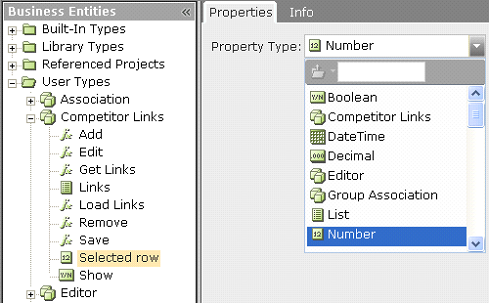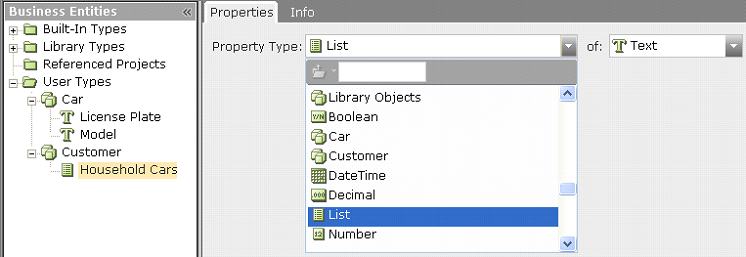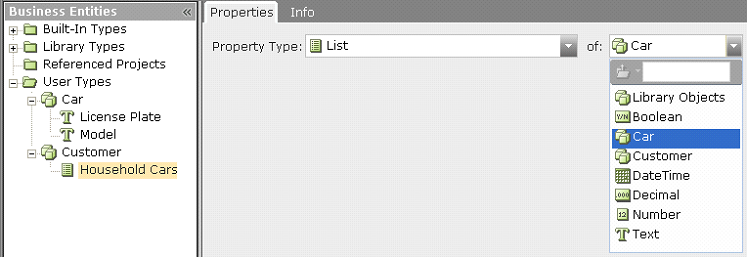To define a new user type property:
| 1. | Select a business entity user type in the tree. |
| 2. | On the ribbon, click New Property. |
A New Property branch is added under the User Types branch that you defined.

| 3. | Specify the type of this property by selecting another business entity user type on which to base this user type, such as the user type Address, which is described in the User Type – Example described below, or a basic data property, such as Text. |
Property Type – Example
An example of a Property type when you define a business entity user type is Address, which contains a property called Street, another property called Zip and another property called City.

This business entity user type can now be used as the basis of the address property of any other user type. In the example below, a user type called Customer was defined, which could have two properties: one called Billing Address and one called Home Address, which are both based on the business entity user type Address.
A List propertyis defined much like any other property. For example, a regular business entity user type can be defined called Car, and it can contain two properties: License Plate and Model:

You can then create a new property under User Type called Household Cars that represents a list of the cars that belong to this Customer. To do so, a new property can be defined of the type List:

The business entity user type Car can then be selected to specify the entities contained in the list.

